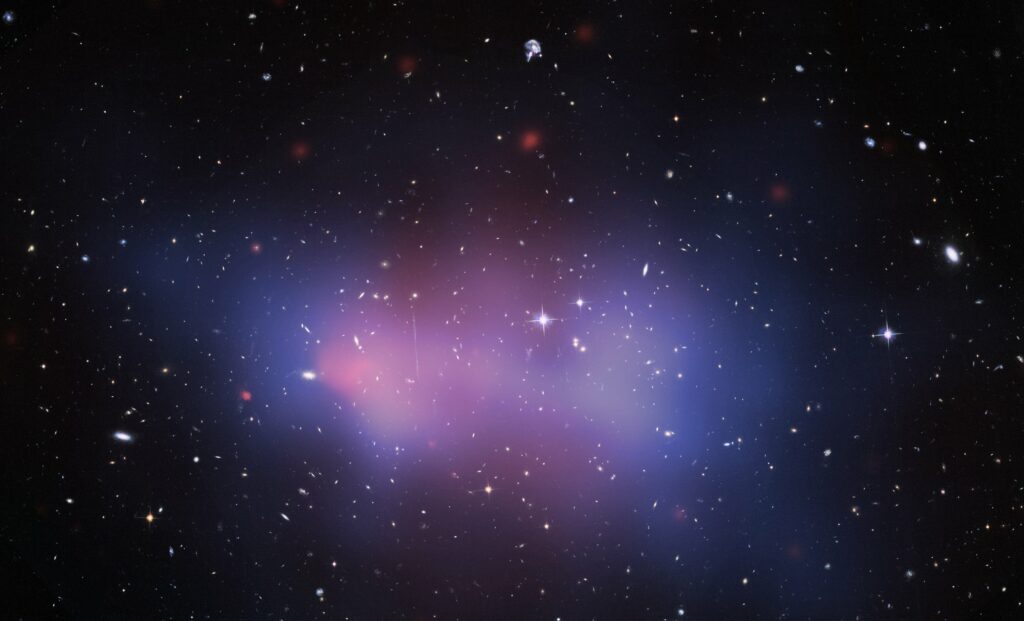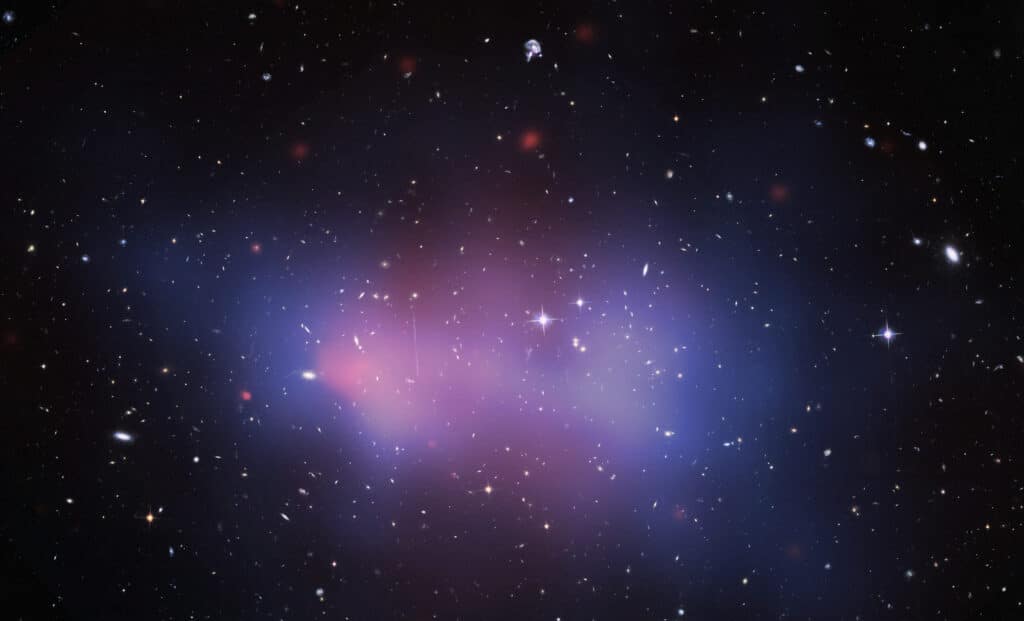New research is challenging long-standing theories about the universe. An international team of astronomers have discovered something they say “should not have happened.” According to the researchers, a high-speed collision between two gigantic clusters of galaxies occurred when the universe was just half its current age, defying the standard model of cosmology known as Lambda-cold dark matter (ΛCDM).
The ΛCDM model suggests that galaxies form first and then later combine to create larger clusters. Therefore, seeing such massive clusters collide at a relatively young cosmic age is unexpected. This discovery shakes the existing understanding of how galaxies and their larger clusters form over time.
The galaxy cluster duo in question is aptly named El Gordo, which means “The Fat One” in Spanish. Its mass is approximately 2000 trillion times that of the Sun, a staggering number to contemplate. “The results revealed that the tension with ΛCDM is very severe for any plausible collision velocity,” said Elena Asencio, a PhD student at the University of Bonn and the study’s lead researcher, in a statement.
The mass of El Gordo was calculated using an interesting phenomenon known as “weak lensing.” In simple terms, weak lensing is the bending of light from distant galaxies as it passes by a massive object like El Gordo, somewhat similar to how a magnifying glass bends light. This measurement was corroborated by the Hubble Space Telescope and more recent results from the James Webb Space Telescope (JWST).

Moreover, researchers employed an innovative “lightcone tomography” method, which essentially counts the number of similarly massive clusters by looking further back in time. In layman’s terms, the further away an object is, the further back in time we are looking when we observe it.
The study found that El Gordo is not a one-off anomaly; there are other instances like the Bullet Cluster that further add to the woes of the ΛCDM model.
“Taken in combination with El Gordo, the situation becomes even worse for ΛCDM. And several other examples are known and mentioned in our study,” said co-author Dr. Indranil Banik of the University of St Andrews, in a statement.
This recent research adds to growing evidence suggesting that galaxies and their clusters may be forming much more rapidly than previously thought. “There is now a lot of evidence that structure formation in the Universe occurred faster than expected in ΛCDM,” explained Pavel Kroupa, Professor at the University of Bonn and Charles University in Prague.
The new findings may ignite more intense scrutiny of the ΛCDM model and encourage further studies aimed at understanding these perplexing celestial objects. So, as scientists delve deeper into the cosmos, the story of our universe seems to be getting more complicated—and more intriguing—than ever.












